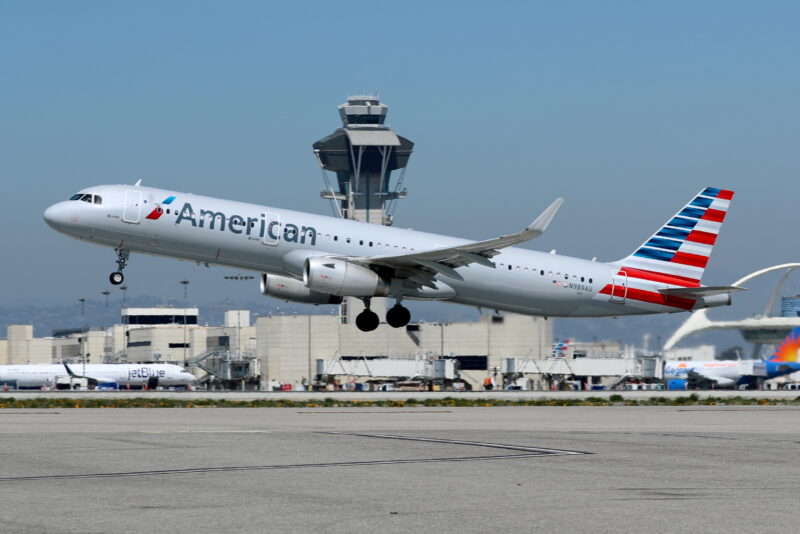American Airlines Flight Returns to LAX After Passengers Report Cabin Fumes

An American Airlines flight from Los Angeles International Airport (LAX) to New York’s JFK International Airport was forced to make an emergency return to Los Angeles on Tuesday Oct. 14 after multiple passengers reported feeling unwell due to fumes in the cabin. The incident has reignited discussions about cabin air quality and the safety measures airlines have in place to protect passengers and crew.
The flight departed LAX shortly before 5 p.m., but within minutes, passengers began experiencing discomfort and reported a strange odor in the cabin. The pilots were notified and also reported unusual symptoms, prompting them to declare an emergency and turn the aircraft back to Los Angeles.
The aircraft in question was a Airbus A321-200, tail number N587UW. According to flight tracking data from FlightAware, the aircraft made a loop over the Los Angeles area before landing safely at LAX around 5:35 p.m. Following the incident, the A321 was removed from service for inspection, and a replacement aircraft was arranged to continue the journey, resulting in an approximate eight-hour delay for passengers.
The pilots followed standard emergency procedures, donning oxygen masks and prioritizing passenger safety. Oxygen masks are critical when cabin air quality is in question, allowing pilots to maintain control of the aircraft while avoiding potential exposure. The crew’s quick reaction and adherence to safety protocols underscored their extensive training for in-flight emergencies.
Upon landing, emergency services and medical teams were waiting to assess passengers and crew. Seven passengers were evaluated for mild symptoms related to the fumes, though none required hospitalization. The Los Angeles Fire Department confirmed that no serious medical issues were detected and that the air quality inside the cabin did not pose an ongoing risk.
American Airlines released a statement emphasizing that the aircraft was immediately taken out of service for inspection and that passenger safety remained its top priority. The airline also thanked its crew for their professionalism in handling the situation and assured travelers that the affected flight would be rescheduled once safety checks were complete.
The incident has drawn renewed attention to the importance of cabin air quality. Modern aircraft are equipped with advanced air filtration and circulation systems designed to maintain a continuous supply of clean air. However, rare occurrences like this highlight that even with state-of-the-art systems, maintenance issues or unexpected malfunctions can occasionally arise.
Experts note that “fume events” are uncommon but not unprecedented, and they can occur when oil, hydraulic fluid, or other contaminants enter the aircraft’s air conditioning system. Regulators and manufacturers continue to study such incidents to enhance monitoring and prevention technologies.
Following the emergency, American Airlines engineers conducted a thorough inspection of the aircraft to identify and correct any faults before it returns to service. The Federal Aviation Administration (FAA) was notified, as is standard procedure for any in-flight safety event.
While unsettling for passengers, the incident ended safely thanks to the swift decision-making of the flight crew and coordination with ground teams. The prompt emergency response prevented further complications and demonstrated the effectiveness of aviation safety protocols.
Events like this serve as reminders that aviation remains one of the safest modes of transportation. Airlines routinely train crews for such contingencies, and the industry’s safety culture emphasizes immediate action and transparent communication. In this case, those principles ensured that passengers were protected and that the issue was addressed swiftly and professionally.
Although the experience caused disruption and anxiety for those onboard, the outcome reaffirmed the strength of the aviation industry’s safety systems and its commitment to maintaining passenger well-being in every circumstance.
Related News: https://airguide.info/?s=American+Airlines
Sources: AirGuide Business airguide.info, bing.com, travelandtourworld.com
